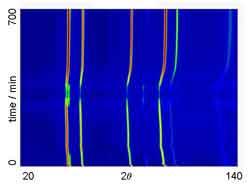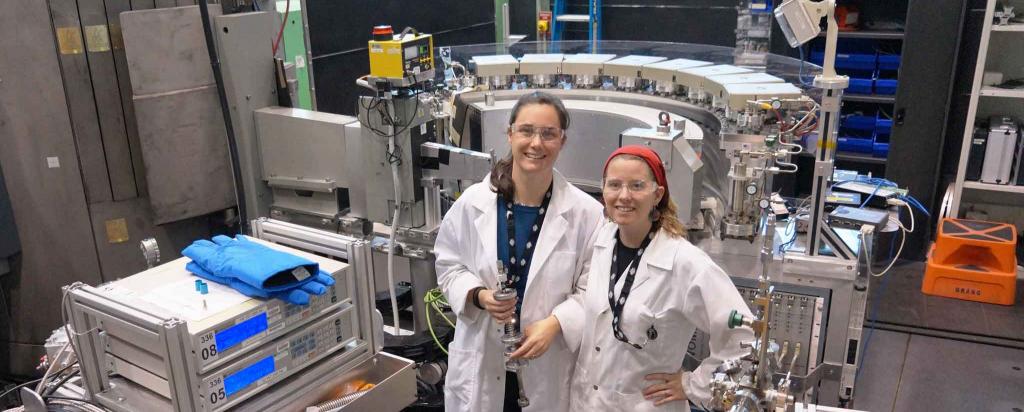

Applications - Wombat
Applications
Wombat can be used to study a range of materials including, novel hydrogen-storage materials for clean energy storage of the future, molecules for drug-delivery systems, negative-thermal-expansion materials (materials that contract upon heating) and materials for fusion reactors.
The properties of a material are linked to its atomic structure, which can be influenced by its environment. The effects of temperature, pressure and applied fields (magnetic or electric) on the atomic structure can affect the material's properties and can be measured by Wombat.
Examples
- Phase transitions - by varying one or more of the temperatures, applied magnetic/electric fields, or applied pressure, the properties in a material can be created or destroyed.
- Material formation - many materials undergo one or more chemical reactions as a function of time as they are formed eg. setting of cement.
- Materials that undergo Negative Thermal Expansion, that is they shrink when heated.
- Cyclic variations - materials periodically exposed to applied fields resulting in changes to the atomic structure.
- In situ studies to observe chemical reactions and other dynamic phenomena as they occur.
On Wombat the focus is on commissioning sample-environment apparatus and running real-time experiments.
Recent results
Highlights
Insights into atomic structure of next-generation superconductors
Our first overseas users used Wombat to measure a particular variant of the common piezoelectric material PZT (lead zirconate titanate). The PZT was subjected to a cycling electric field, switching at rates of 1Hz to 1kHz. The data was acquired stroboscopically: each time the electric field switches on the detector is retriggedered, and up to 64 time bins were measured for each period. This time resolution is a way of probing the time response of the material. The electric field induces strain and domain switching effects, which show up as subtle changes in the position or intensities of the peaks.

Magnetic diffraction data
Congratulations to Ross Whitfield and Jessica Hudspeth on their outstanding honours theses. Both are students of Darren Goossens at the ANU. Wombat data made an important contribution to both their honours projects.
Jessica's study of the crystal and magnetic structure LaCa2Fe308 and NdCa2Fe308 has been submitted for publication and she graduated with first class honours and the University Medal. Ross, whose work using Wombat to look at real time structural change in stainless steel during sintering is a previous "Wombat Highlight", graduated with first class honours.
Having obtained its operating licence Wombat invites users for (friendly user) experiments. Ross Whitfield, an honours student with Darren Goossens at the Australian National University in Canberra, looked at sintering processes of steel using the vacuum furnace looked at sintering processes of steel using the vacuum furnace. The data (below) show clearly the appearance and disappearance of various phases over a ramp/hold/cooling cycle of several hours, with data taken at one minute intervals.
Furthermore, Wombat took its first magnetic diffraction data on Pr0.8Ln0.2Mn2Ge2, a sample provided by Stewart Campbell, University of New South Wales at the Australian Defence Force Academy. The substitution of Lu for Pr leads to a decrease in the lattice constants a, c and the unit-cell volume at room temperature with this contraction of the unit cell resulting in modifications of the Pr1-xLuxMn2Ge2 magnetic structures.
Four magnetic phase transitions - linked primarily with temperature-driven changes in the intralayer Mn-Mn separation distances - have been detected within the temperature range 4.5 – 550 K. The diffraction pattern below was taken in the temperature range 5 - 265 K, showing formation of the Fmi magnetic state below Tc/c = 192 K for Pr0.8Lu0.2Mn2Ge2.
